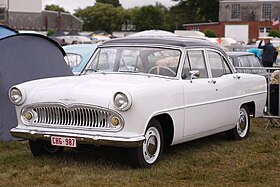
Simca was a French automaker, founded in November 1934 by Fiat S.p.A. and directed from July 1935 to May 1963 by Italian Henri Pigozzi. Simca was affiliated with Fiat and, after Simca bought Ford's French subsidiary, became increasingly controlled by Chrysler. In 1970, Simca became a brand of Chrysler's European business, ending its period as an independent company. Simca disappeared in 1978, when Chrysler divested its European operations to another French automaker, PSA Peugeot Citroën. PSA replaced the Simca brand with Talbot after a short period when some models were badged as Simca-Talbots.

Mathis S.A. was an automobile manufacturer in Alsace that produced cars between 1910 and 1950. Founder Émile Mathis (1880–1956) was born in Strasbourg and died in Geneva.

Matford was a French automotive manufacturer established as a joint venture in 1934 by local firm Mathis and US-based Ford Motor Company. The name Matford derived from both companies' names. The company ceased activities in 1940.
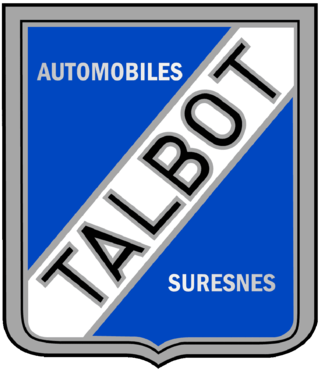
Talbot-Lago was a French automobile manufacturer based in Suresnes, Hauts de Seine, outside Paris. The company was owned and managed by Antonio Lago, an Italian engineer that acquired rights to the Talbot brand name after the demise of Darracq London's subsidiary Automobiles Talbot France in 1936.

The Peugeot 203 is a small family car which was produced by the French car manufacturer Peugeot between 1948 and 1960.

The Ford Comète is a car that was built between 1951 and 1954 in France by Ford SAF. Intended as the luxury model in the range, the Comète's bodywork was built by FACEL, who later produced the better-known Facel Vega luxury cars under their own name. The original engine was a 2.2 L V8 produced by Ford SAF of French design, also used in the Ford Vedette, with a Pont-à-Mousson 4-speed manual transmission fitted.

The Renault Juvaquatre is a small family car / compact car automobile produced by the French manufacturer Renault between 1937 and 1960, although production stopped or slowed to a trickle during the war years. The Juvaquatre was produced as a sedan/saloon until 1948 when the plant switched its full attention to the new Renault 4CV. During the second half of 1952 the plant restarted production of the Juvaquatre sedans/saloons for a period of approximately five months.

The Renault Frégate is an executive saloon car produced by the French automaker Renault between 1951 and 1960. Estate variants, the Renault Domaine and the Renault Manoir, were introduced in 1956 and 1958 respectively.

The Simca Vedette is an executive car, manufactured from 1954 to 1961 by French automaker Simca, at their factory in Poissy, France. The Vedette competed in France's large car market at a time when the economy was finally returning to growth and enjoyed moderate success with its American style finished off by the Italian designer Rapi. It was marketed with different model names according to trim and equipment levels. The Vedette was Simca's largest model at that time, and it went on to spawn a more economical version, the Simca Ariane.
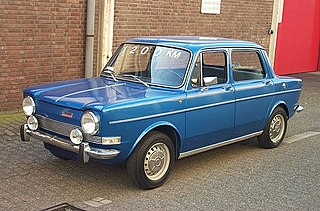
The Simca 1000, or Simca Mille in French, is a small, boxy rear-engined four-door saloon, manufactured for 18 years by French automaker Simca, from 1961 to 1978.

The Ford Vedette is a large car formerly manufactured by Ford SAF in their Poissy plant from 1948-1954.
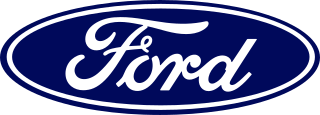
Ford France is the French subsidiary of the American automaker Ford Motor Company, which existed under various names between 1916 and 1954, when Ford sold the manufacturing business to Simca.

The Simca Aronde is an automobile which was manufactured by the French automaker Simca from 1951 to 1964. It was Simca's first original design, as well as the company's first unibody car. "Aronde" means "swallow" in Old French and it was chosen as the name for the model because Simca's logo at that time was a stylized swallow.
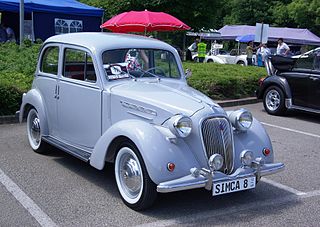
The Simca 8 is a small family car built by Simca and sold in France between November 1937 and 1951, available as a saloon, coupé or cabriolet. It was a rebadged Fiat 508C "nuova Balilla" made at Fiat's Simca plant in Nanterre, France.
The Stellantis Poissy plant is a French car plant belonging to Stellantis located in Poissy, Yvelines. It is dedicated to the manufacturer's Platform 1 cars, which are cars in the subcompact class, with an annual output of approximately 200,000 cars.

The Talbot Lago-Record Type T26 was a large, six-cylinder executive car launched by the French Talbot company in 1946. In the context of the company's protracted financial collapse, the last T26s were probably those produced during 1953.
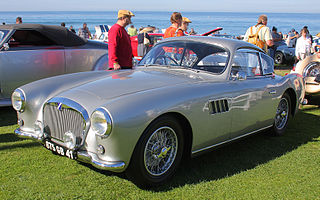
The Talbot-Lago Sport was a coupé-bodied sports car introduced by the manufacturer in May 1955. It was Talbot-Lago's last production model, and only 54 were built. After a couple of years the Talbot-designed engine was replaced with a BMW unit and the car was rebranded as the Talbot-Lago America.
Paul-Marie Pons was a French naval engineer who became a senior civil servant. He is remembered for the Pons Plan which restructured the French automotive industry in the second half of the 1940s.

The Ford Vendôme is a large car that was manufactured by Ford SAF at their plant in Poissy, France, from 1953 until 1954.

The Renault Vivasport was a 6-cylinder engined executive automobile introduced by Renault in September 1933 and produced till April 1935. A larger engined version was produced between December 1934 and February 1938. As with many Renaults during the 1930s, type changes as well as small often cosmetic facelifts and upgrades appeared frequently.
